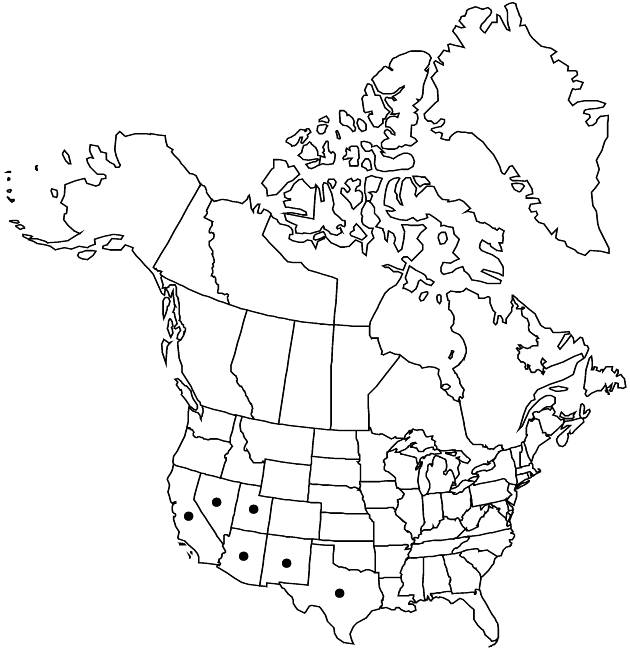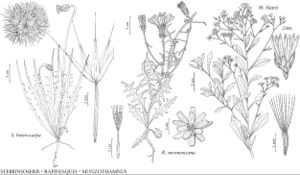Difference between revisions of "Rafinesquia neomexicana"
Smithsonian Contr. Knowl. 5(6): 103. 1853.
imported>Volume Importer |
imported>Volume Importer |
||
| Line 50: | Line 50: | ||
|publication year=1853 | |publication year=1853 | ||
|special status=Illustrated | |special status=Illustrated | ||
| − | |source xml=https:// | + | |source xml=https://bitbucket.org/aafc-mbb/fna-data-curation/src/2e0870ddd59836b60bcf96646a41e87ea5a5943a/coarse_grained_fna_xml/V19-20-21/V19_545.xml |
|tribe=Asteraceae tribe Cichorieae | |tribe=Asteraceae tribe Cichorieae | ||
|genus=Rafinesquia | |genus=Rafinesquia | ||
Latest revision as of 19:53, 5 November 2020
Plants 15–60 cm. Involucres 18–25 mm. Ligules surpassing phyllaries by 15–20 mm. Cypselae 12–18(–20) mm, including relatively stout beaks 3–6 mm; pappi of 15–21, plumose (proximal 65–80%) bristles, barbs crooked, entangled. 2n = 16.
Phenology: Flowering Mar–May.
Habitat: Open sites, sandy soils, gravelly clay loams in Lower and Upper Sonoran Zones, often in Creosote Bush Scrub and Joshua Tree Woodland, Mojave and Colorado deserts
Elevation: 200–1500 m
Distribution

Ariz., Calif., Nev., N.Mex., Tex., Utah, Mexico (Baja California, Sonora).
Discussion
Selected References
None.
Lower Taxa
None.
... more about "Rafinesquia neomexicana"
